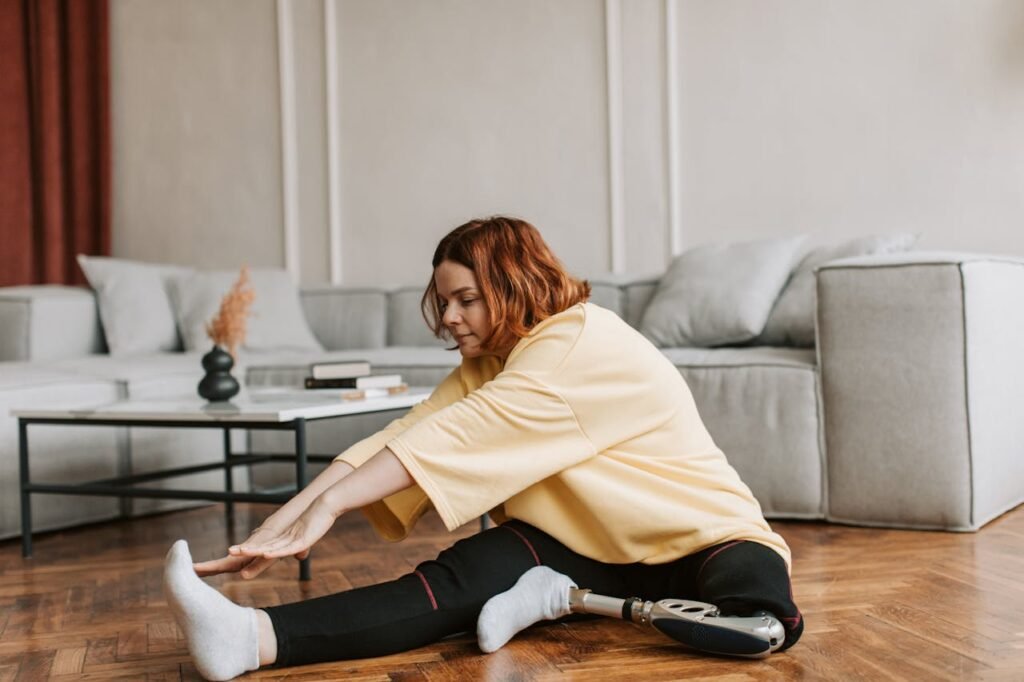After losing a leg, many people face one big challenge every single day—staying balanced. Something as simple as walking across the room or standing to brush your teeth can feel unstable. That feeling can lead to fear, and fear can stop people from moving as much as they want.
But what if your body could learn to balance better?
That’s where EMS, or Electronic Muscle Stimulation, comes in. EMS can gently wake up the muscles that help with standing, walking, and steady movement. It helps you train smarter, regain control, and feel more stable—step by step.
In this article, we’ll explore how EMS helps lower limb amputees improve balance and stability. We’ll explain everything in plain, simple language. No heavy terms. Just helpful advice you can use.
Let’s begin.
Understanding Balance and Stability After Limb Loss
Why Balance Feels Different After Amputation
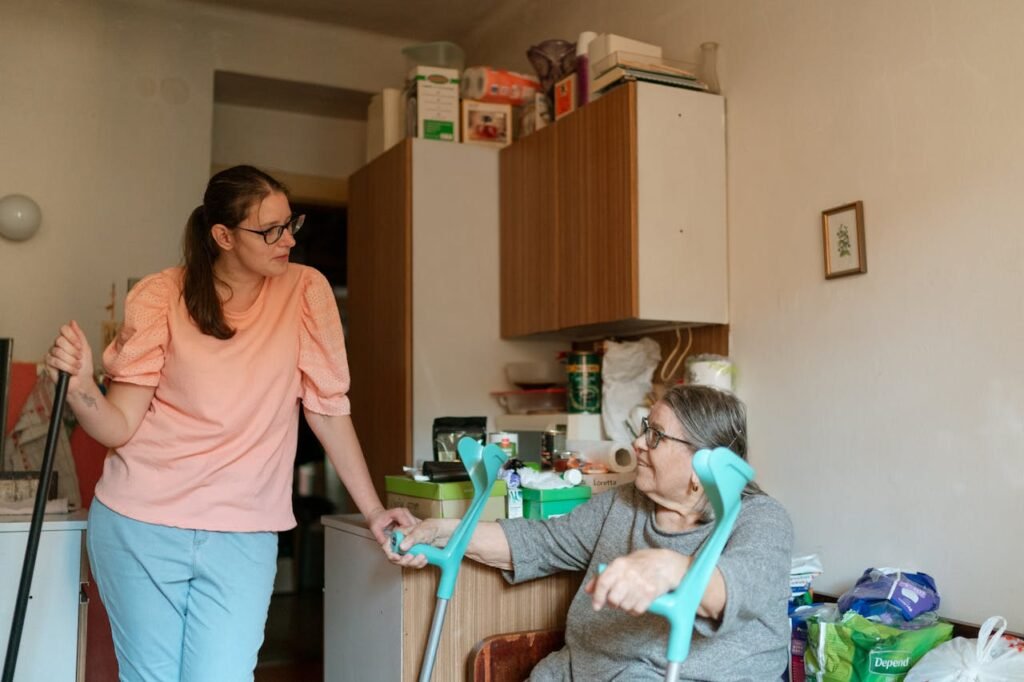
When you lose a leg—whether above or below the knee—your whole body has to adjust.
The muscles that once worked together to keep you steady are suddenly out of sync. Your center of gravity shifts. You may feel like you’re leaning too far to one side, or like your body isn’t reacting fast enough to keep you from falling.
This isn’t just about the leg itself. It’s also about how your brain communicates with the muscles that are still there.
Balance is not just standing still—it’s how your body reacts when you move, turn, or get pushed. And for amputees, those reactions become slower or harder to control.
Stability Is More Than Strength
It’s easy to think that building stronger leg muscles is the answer. And yes, strength is part of it.
But real stability comes from something deeper: coordination. It’s your brain’s ability to send fast, clear messages to the right muscles at the right time.
Without that coordination, even strong muscles can feel wobbly. EMS helps bring back this communication between the brain and body.
It doesn’t just make your muscles stronger—it helps them work together again.
The Role of Residual Muscles
Even after limb loss, many of the muscles in your thigh, hip, or lower leg are still there.
These are the muscles that once helped bend the knee, lift the toes, swing the leg forward, or push off the ground.
When these muscles go unused for too long, they become weaker. And that weakens your stability.
The good news is—they can be trained again. EMS activates these muscles and keeps them working, even when you’re not moving much.
That makes it easier to stay upright and react quickly if you start to lose balance.
How EMS Works for Lower Limb Amputees
What EMS Does
EMS stands for Electronic Muscle Stimulation. It sends gentle electrical pulses through the skin to your muscles.
These signals cause the muscle to tighten, just like it would if your brain told it to move.
It’s not painful. Most people describe it as a soft tingling or buzzing feeling.
The goal is to keep your muscles active and responsive, even if you’re not able to use them fully yet.
This helps prevent stiffness, muscle shrinking, and loss of balance.
EMS as a Brain-Muscle Trainer
Your brain gets lazy when it doesn’t have to send signals to a muscle anymore.
Over time, that connection fades.
EMS brings that connection back.
When your muscle contracts from the stimulation, your brain starts to notice again. It pays attention. It reopens those communication lines.
This is key for amputees learning to walk with a prosthetic. If the brain can’t “see” the muscle, it can’t use it properly for movement or balance.
EMS teaches the brain to see those muscles again. That’s how you start rebuilding stability.
Where EMS Can Be Used
For lower limb amputees, EMS can be applied to areas like the thigh, glute, or calf—depending on where the amputation occurred.
If you’re a below-knee amputee, you might use EMS on the remaining calf muscles and the front of the shin. These muscles help lift the foot and balance during walking.
If your amputation is above the knee, EMS can target the thigh and hip muscles. These are key for supporting your body and keeping you upright.
No matter where it’s used, EMS helps wake up the muscles that support balance. And when your muscles wake up, your body gets better at staying steady.
EMS in Real-Life Movement
Walking With More Control
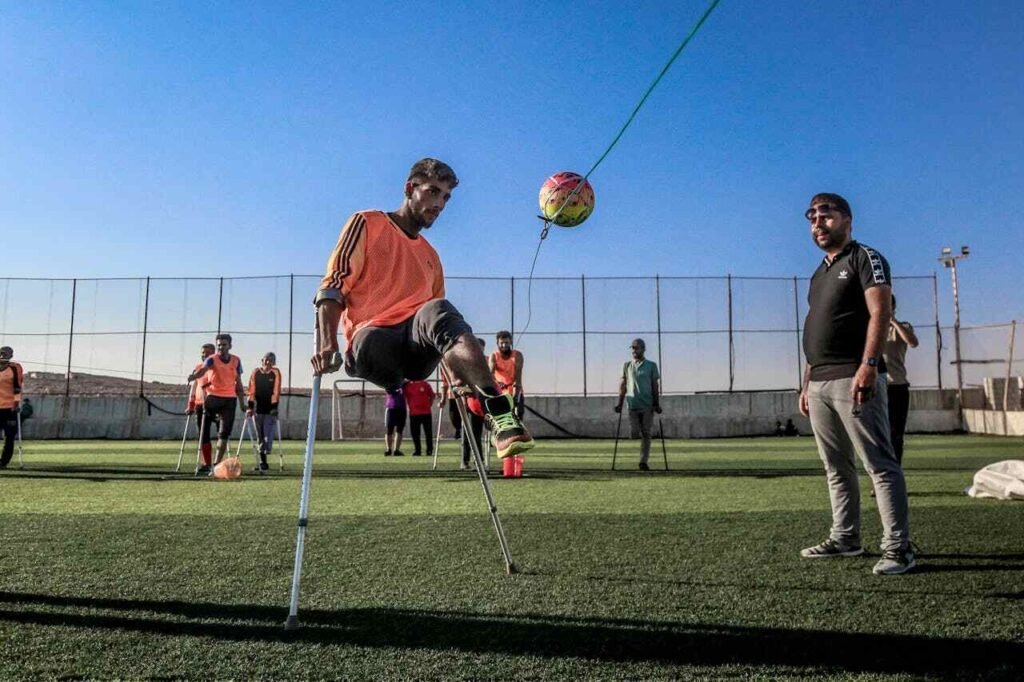
When you first learn to walk with a prosthetic, it often feels strange. One side feels natural. The other side feels mechanical.
That uneven feeling makes it hard to walk smoothly or with confidence.
EMS helps by making the supporting muscles stronger and more active. This gives your prosthetic leg a better “base” to work with.
It also helps train the muscles to move at the right time—so your steps feel more even and natural.
Over time, walking becomes less of a struggle and more of a rhythm.
Standing Without Fear
Many lower limb amputees say they feel nervous just standing still. They feel like they might fall at any moment.
This fear is real, and it makes life harder.
But EMS helps ease that fear by giving your muscles the tools they need to hold you steady.
When your brain and muscles start working together again, you feel more in control.
Your stance becomes stronger. Your knees lock better. Your hips stay level.
That sense of stability doesn’t just change how you move—it changes how you feel.
Reacting to Movement
Balance isn’t just about stillness. It’s about how quickly you react when something changes.
Maybe someone bumps into you. Or maybe you step on uneven ground.
If your muscles are slow to respond, you might fall.
EMS keeps your muscles ready. It trains them to contract quickly and with purpose.
That kind of fast response is what keeps you on your feet, even when things don’t go as planned.
Why Balance Training Alone Isn’t Always Enough
The Limitations of Standard Therapy
Most lower limb amputees go through physical therapy after amputation. These sessions focus on walking practice, strengthening exercises, balance boards, and sometimes treadmill work. While these methods are helpful, they often fall short in one area—neuromuscular coordination.
Muscles may gain strength, but they still struggle to “fire” in the right sequence or at the right time. Especially when unexpected movements or quick reactions are needed, the body may hesitate. This gap can lead to instability, stumbles, or even falls.
Standard therapy doesn’t always address this delay because it can’t directly activate the internal communication between the brain and residual muscles. That’s where EMS steps in. It adds a layer of precision training that helps reconnect the dots between the nervous system and the muscles that keep you upright.
EMS Fills the Missing Link
When EMS is used alongside regular balance training, it doesn’t replace your therapy—it amplifies it. While you’re standing, walking, or practicing steps, EMS stimulates the same muscles you’re trying to activate, reinforcing the movement pattern both physically and neurologically.
The muscle contracts with the signal, and your brain gets real-time feedback. Over time, this repeated connection builds stronger motor patterns and teaches your body how to react quickly. It’s like adding a missing piece to the puzzle of balance recovery.
Even five to ten minutes of EMS before a regular therapy session can “wake up” dormant muscles and prepare them to work better during movement. This primes your body for better coordination, faster reactions, and more controlled posture.
Getting Started with EMS for Stability
Setting Clear Goals

Before beginning EMS, it’s important to understand what you’re trying to improve. For lower limb amputees, this might include goals like standing without support, walking with better symmetry, or preventing falls.
Once your goals are defined, your therapist or prosthetist can help choose which muscles to target and what kind of EMS routine to follow. Goals help guide the intensity, duration, and placement of the EMS pads, making your sessions more effective and personalized.
This approach keeps the focus on function—not just muscle strength. Whether your aim is to walk with a cane, use a prosthetic full-time, or move independently in your home, EMS can be customized to support that specific outcome.
Understanding Electrode Placement
Proper electrode placement is key to success with EMS. For below-knee amputees, electrodes are typically placed around the remaining calf and shin area. These muscles control ankle movement and foot positioning—crucial for smooth walking and safe landings.
For above-knee amputees, the quadriceps and hamstrings play a big role in balance, as they help stabilize the knee and move the hip. Placing electrodes on these muscles helps improve leg lift, swing, and support when standing.
Some users also benefit from placing EMS pads on their glutes and lower back muscles. These are part of the “core stabilizers” that affect the entire body’s alignment, especially during upright activities like walking or climbing stairs.
How Often to Use EMS
A good starting point is three to five sessions per week, with each session lasting around 20–30 minutes. This gives your muscles time to adapt and recover, while keeping the training consistent.
As your body gets used to the stimulation, you can adjust the intensity or try combining EMS with standing exercises, step training, or light walking. Pairing EMS with active movement strengthens both the muscles and the brain’s response.
You don’t need to overdo it. The goal is steady, sustainable improvement. Let your therapist guide your pace, and always monitor how your body feels after each session.
EMS for Older Amputees or Those with Limited Mobility
A Safe Way to Rebuild Confidence
For older adults or those with limited mobility, EMS can offer a gentle, passive way to regain muscle activity without putting too much strain on the body. It allows users to train muscles even while seated or lying down, making it especially useful for those recovering from surgery, dealing with fatigue, or managing multiple health issues.
Many older amputees worry about falling. This fear can limit their movement, causing their muscles to weaken further. EMS helps reverse that cycle. Even light stimulation improves muscle tone, circulation, and reaction speed—giving users a better foundation for safe, steady movement.
With the right settings and proper guidance, EMS is safe, non-invasive, and easy to use at home. It helps users feel more in control, more balanced, and less afraid of losing their footing.
Making Daily Tasks Easier
Lower limb amputees often say they struggle most with everyday tasks—getting out of bed, standing from a chair, walking to the kitchen. These aren’t exercises, but they require good stability.
EMS supports these tasks by strengthening the muscle patterns involved in each movement. As your glutes, thighs, and core muscles become more responsive, it gets easier to rise from a chair without falling forward or to stand for longer without needing support.
These improvements are subtle but deeply meaningful. They give users more freedom and reduce the daily stress of managing their environment. Over time, EMS becomes more than a therapy tool—it becomes part of a more active, independent lifestyle.
EMS and Prosthetic Success
Making the Most of Your Prosthetic
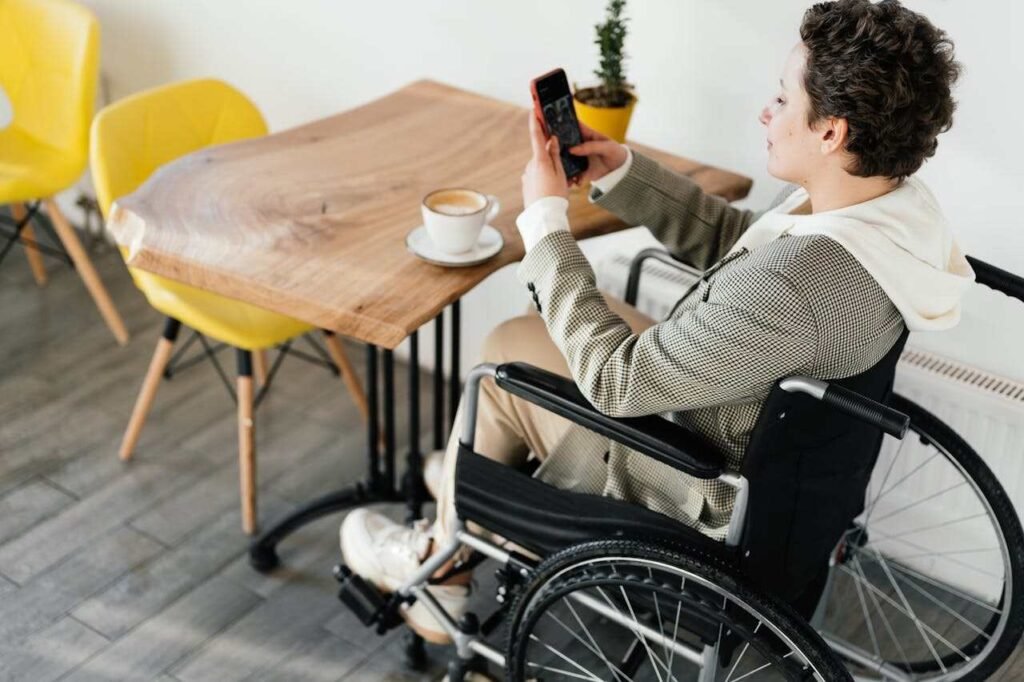
Getting fitted with a prosthetic leg is a major step. But for many users, wearing it is only part of the journey. Using it well—confidently, safely, and without discomfort—depends on how strong and coordinated your remaining muscles are.
That’s why EMS is so valuable during the transition to prosthetic use. It helps prepare the muscles that support walking, weight shifting, and upright balance. When these muscles are stronger and more responsive, the prosthetic becomes easier to control and feels more like a part of your body.
Users who train with EMS before and during prosthetic fitting often say they feel more in tune with their body. Their movements are smoother. Their steps feel more even. And their recovery moves faster because they’re starting with a more solid foundation.
Reducing Compensations and Injuries
One common issue with lower limb prosthetics is compensation—when the body overuses one side to make up for the weaker one. Over time, this can lead to back pain, hip strain, or even joint problems on the stronger leg.
EMS helps reduce compensation by supporting the side with the prosthetic. As the hip, thigh, and glute muscles become stronger, they share the workload more evenly. This keeps your movements balanced and reduces the risk of overuse injuries.
It also improves comfort. When both sides of the body are working together, walking feels more fluid. You’re not dragging or limping—you’re moving with intention and rhythm.
Supporting Socket Fit and Comfort
For prosthetics to work well, they must fit comfortably. But a good fit depends on the shape and tone of your residual limb. If your muscles are weak or shrinking, the socket may feel loose or unstable.
EMS keeps the limb active. It helps maintain muscle tone and blood flow, which helps the socket fit better and feel more secure. A well-toned limb also reduces the chances of skin breakdown or pressure sores, which are common when there’s too much rubbing or shifting inside the socket.
Many users notice that EMS helps them wear their prosthetic longer, with less discomfort. It gives them more hours of active life each day—which is what prosthetics are meant for in the first place.
Helping Clinics and Rehab Centers Use EMS the Right Way
EMS as a Structured Rehab Tool
If you run a prosthetic clinic or rehabilitation center, EMS can easily become part of your core services. It’s not just a gadget. It’s a proven tool that supports better recovery, stronger outcomes, and greater patient confidence.
The key is to make EMS part of your regular rehab pathway. This might include offering EMS training for patients waiting for their prosthetic, using EMS during gait training, or offering long-term stability programs for those with limited mobility.
When you include EMS early in the recovery process, it prepares the user both physically and mentally for the work ahead. When used later, it helps users maintain progress and reduce setbacks.
This flexibility makes EMS a long-term partner in patient care—not just a short-term fix.
Designing Simple, Actionable Programs
To make EMS successful in your clinic, start with simple, goal-based programs. For example, offer a 4-week pre-prosthetic stability plan or a 6-week post-fitting muscle re-education course.
Break these programs into easy steps. Focus on key outcomes like “standing without support,” “walking ten steps with a prosthetic,” or “maintaining balance on uneven surfaces.”
Train your staff to help with electrode placement, session timing, and progress tracking. And give patients clear instructions they can follow at home or during therapy visits.
These structured programs not only help patients succeed, but also help your clinic show measurable results—a powerful way to build trust and referrals.
Making EMS Affordable and Accessible
One of the biggest barriers to using EMS in rehabilitation has always been cost. But that’s changing.
At Robobionics, we built BrawnBand to solve this problem. It’s an EMS device made right here in India, built with the specific needs of limb-different users in mind.
It’s portable, easy to use, and designed for both clinics and home use. Whether you’re supporting a single patient or running multiple sessions in a rehab center, BrawnBand offers a simple, affordable way to bring EMS into your program.
We also offer training and support so your team can get started with confidence. You don’t need to be an expert to use EMS—you just need the right partner.
Long-Term Benefits of EMS for Lower Limb Amputees
Staying Active and Independent
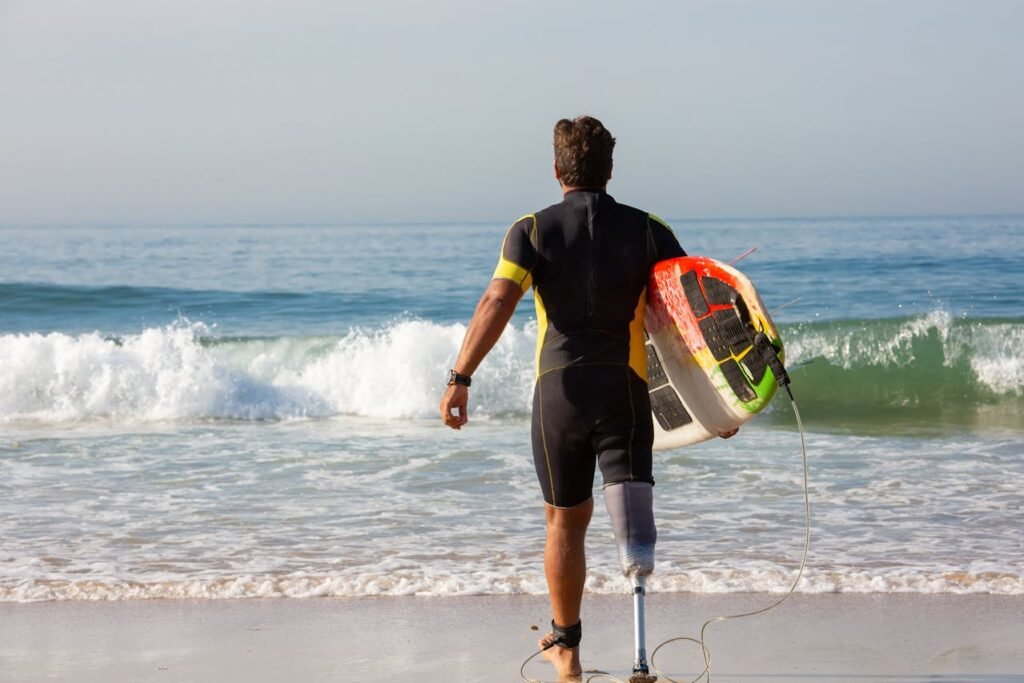
Stability is not just about walking better today—it’s about staying active for years to come. EMS helps lower limb amputees keep their muscles awake and working, even as life slows down with age or other health issues.
Regular EMS sessions, even once or twice a week, keep the brain-muscle connection strong. That means fewer falls, fewer hospital visits, and more confidence in everyday life.
When your muscles stay engaged, it’s easier to get up from a chair, climb stairs, or simply stand without swaying. These small wins add up to a much bigger goal: independence.
Preventing Muscle Loss Over Time
As we age, muscle loss happens naturally. For amputees, this loss can happen faster on the residual limb because it’s not always used the same way.
EMS slows that process. By gently stimulating the muscles, it keeps them active even if you’re not moving much. This protects the shape of the limb, supports better socket fit, and reduces the chance of long-term complications.
It’s especially helpful during recovery breaks—like after surgery, injury, or prosthetic adjustments—when normal movement is limited. EMS keeps your muscles ready, so you can return to your routine more easily when the time comes.
Building Confidence Step by Step
One of the biggest silent struggles for amputees is fear—fear of falling, of looking weak, of not being able to keep up. This fear can lead to hesitation, isolation, and a decline in both mood and mobility.
EMS helps break that cycle.
When your muscles respond, you start to believe in your body again. You see real progress. You feel stronger. And that changes everything—from how you walk, to how you stand, to how you face each new day.
Conclusion: Balance Begins With Belief
Losing a leg doesn’t mean losing your ability to move, stand tall, or feel steady on your feet. With the right tools, support, and mindset, you can build balance—not just physically, but emotionally.
EMS is more than just a device. It’s a way to teach your muscles how to trust themselves again. It helps your brain remember how to move, react, and stay upright—even when life throws you off track.
At Robobionics, we believe stability is a right, not a privilege. That’s why we built BrawnBand—a safe, simple, and affordable EMS solution for people just like you. Whether you’re learning to walk again, preparing for a prosthetic, or simply looking to stay strong with age, we’re here to help.
If you’re ready to take the next step toward better balance and stability, book a free demo with our team today:
Let’s make steady movement your new normal—one step at a time.



